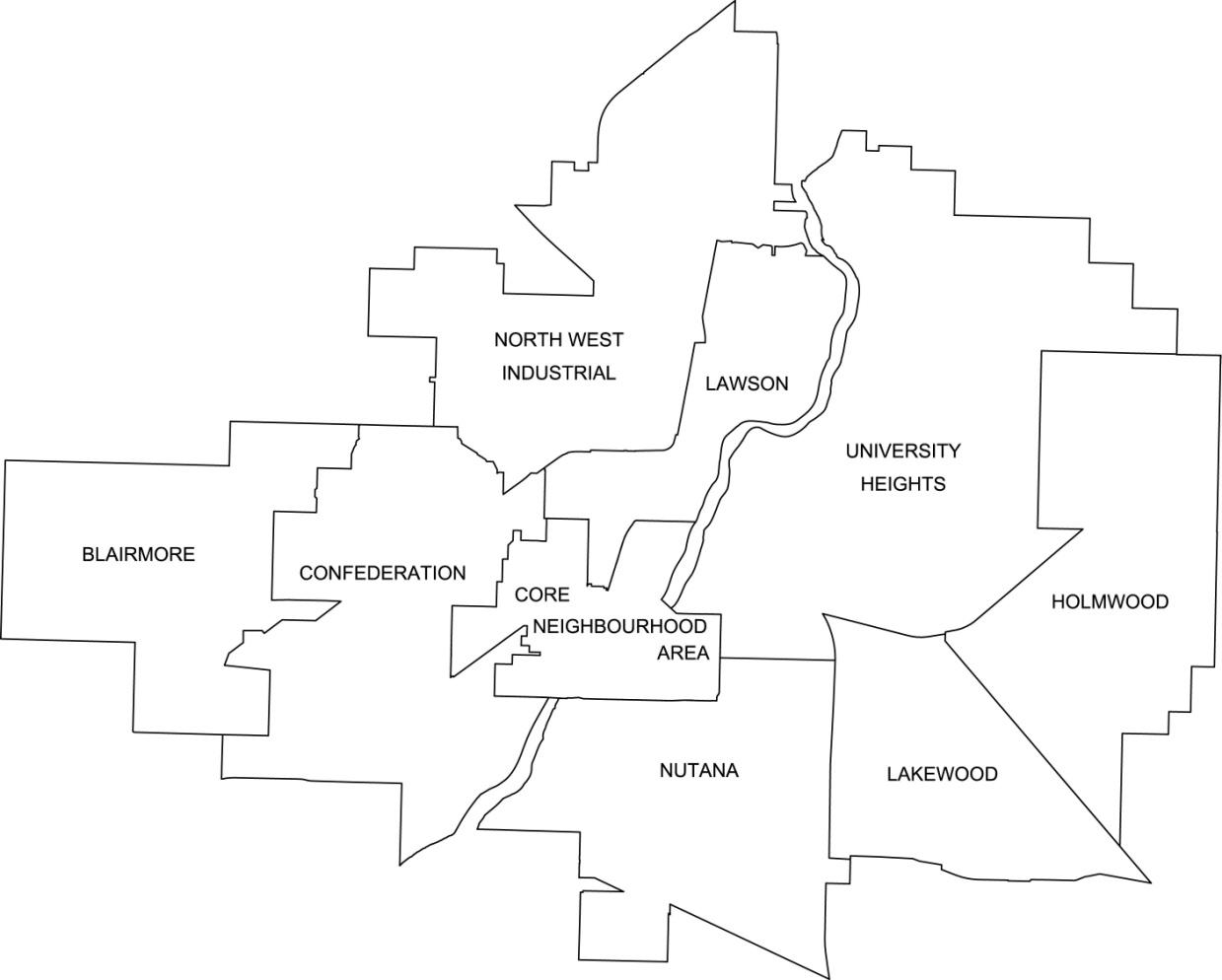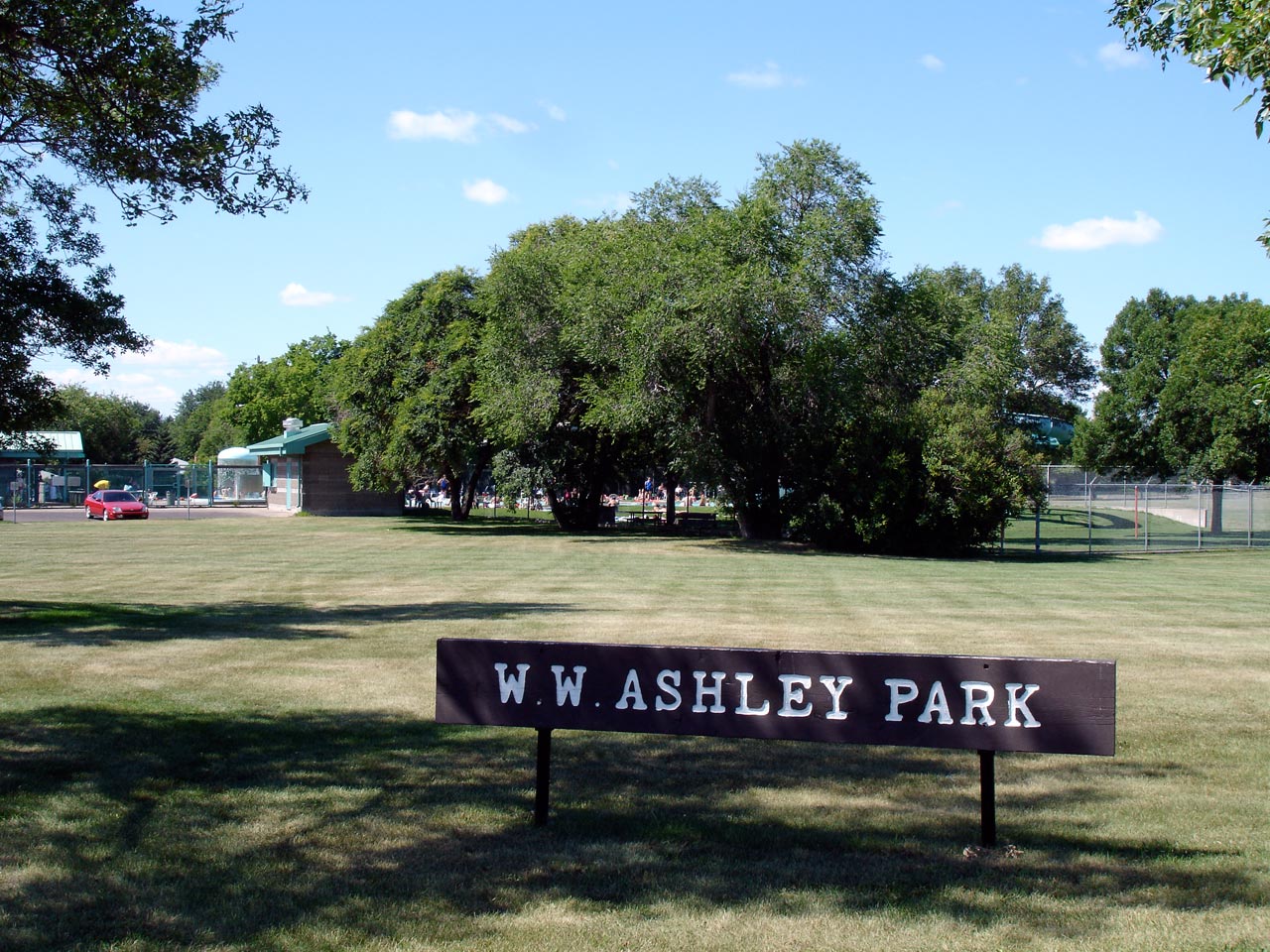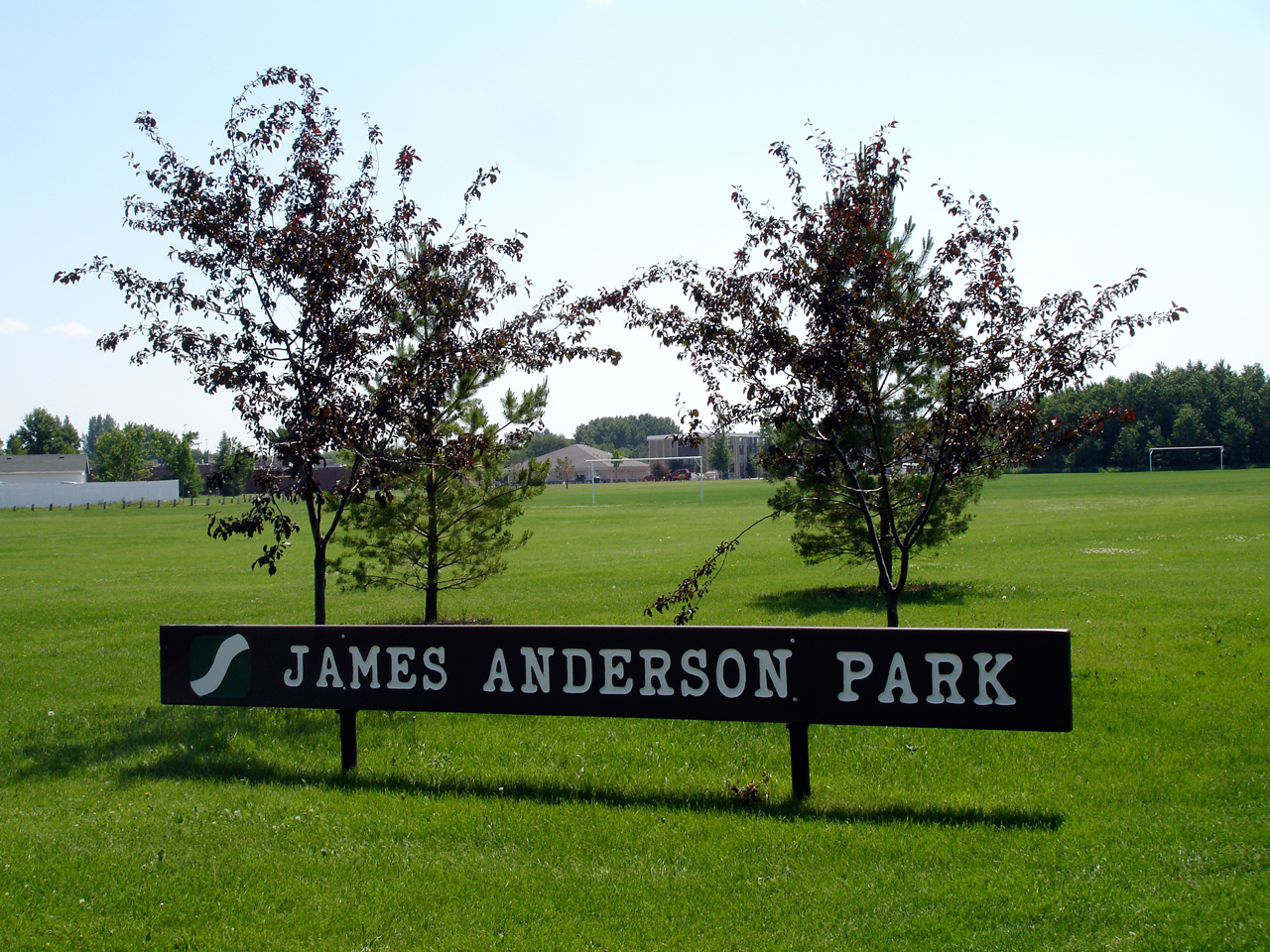|
List Of Neighbourhoods In Saskatoon
The city of Saskatoon, Saskatchewan, Canada currently has 65 neighbourhoods divided amongst 9 designated Suburban Development Areas (SDAs). Some neighbourhoods underwent boundary and name changes in the 1990s when the City of Saskatoon adjusted its community map. Definitions * Neighbourhood: the basic unit of residential development, comprehensively planned and maintained over the long term. Many older neighbourhoods were defined by elementary school catchment areas. The boundaries of some neighbourhoods were adjusted when the school boards no longer required students to live in their school catchment area. The boundaries of neighbourhoods are now defined by "natural" barriers such as major streets, railways, and bodies of water. * Suburban Development Area (SDA): a collection of neighbourhoods organized to facilitate long range planning for infrastructure and related community facilities. Each SDA has approximately ten neighbourhoods, 50,000 people, district and multi-district ... [...More Info...] [...Related Items...] OR: [Wikipedia] [Google] [Baidu] |
Saskatoon Neighbourhoods
Saskatoon () is the largest city in the Canadian province of Saskatchewan. It straddles a bend in the South Saskatchewan River in the central region of the province. It is located along the Trans-Canada Yellowhead Highway, and has served as the cultural and economic hub of central Saskatchewan since its founding in 1882 as a Temperance colony. With a 2021 census population of 266,141, Saskatoon is the largest city in the province, and the 17th largest Census Metropolitan Area in Canada, with a 2021 census population of 317,480. Saskatoon is home to the University of Saskatchewan, the Meewasin Valley Authority (which protects the South Saskatchewan River and provides for the city's popular riverbank park spaces), and Wanuskewin Heritage Park (a National Historic Site of Canada and UNESCO World Heritage applicant representing 6,000 years of First Nations history). The Rural Municipality of Corman Park No. 344, the most populous rural municipality in Saskatchewan, surrounds t ... [...More Info...] [...Related Items...] OR: [Wikipedia] [Google] [Baidu] |
Rosewood, Saskatoon
Rosewood is a primarily residential neighbourhood under construction in southeast Saskatoon, Saskatchewan, Canada. The majority of its residents live in single detached dwellings. In 2011, the area was home to 73 residents. In early 2015 there were approximately 900 occupied residences. The neighbourhood is considered a high-income area, with an average family income of $104,964, and a home ownership rate of 93.3%. History The land where Rosewood is planned to exist was annexed between 1980 and 1984. It was considered challenging to develop - the area is dotted with sloughs and has a high water table. The majority of the wetlands were drained and filled with a single large wetland complex modified and used for drainage, eliminating the need for some storm sewer mains. Servicing of the land began in 2008, and home construction in the first phase of the community was underway in the summer of 2009. The southwest corner of the community will consist of a commercial hub and multi-fami ... [...More Info...] [...Related Items...] OR: [Wikipedia] [Google] [Baidu] |
Holliston, Saskatoon
Holliston is a primarily residential neighbourhood located in the southeast part of Saskatoon, Saskatchewan, Canada. It includes part of the 8th Street East (Saskatoon), 8th Street business district. Just over half of its dwellings are single detached houses, with a sizeable minority of duplex or apartment-style multiple unit dwellings. As of 2007, the area is home to 3,412 residents. The neighbourhood is considered a middle-income area, with an average family income of $51,674, and a home ownership rate of 62.8%. History The land where Holliston now exists was annexed in the period between 1911 and 1919. On a 1913 map of registered subdivisions, the land was divided into several parcels, with names such as Nutana Hill, University Homes, Nutana Park and University Park. The area was not actively developed until after World War II, with home construction at its peak from 1946 until 1970. Holliston School was built in 1956. The Edmund Heights low-income property was developed in th ... [...More Info...] [...Related Items...] OR: [Wikipedia] [Google] [Baidu] |
Haultain, Saskatoon
Haultain is a mostly residential neighbourhood located in south-central Saskatoon, Saskatchewan, Canada. It is a suburban subdivision, consisting mostly of low-density, single detached dwellings. As of 2007, the area is home to 2,742 residents. The neighbourhood is considered a middle-income area, with an average family income of $47,890, an average dwelling value of $201,503 and a home ownership rate of 59.3%. History The west half of Haultain was within the city limits when it incorporated; the land east of Clarence Avenue was annexed by the city between 1910 and 1919. A 1913 map shows that the present-day Haultain area overlaps two registered subdivisions of the day: the Broadway Addition in the west and Victoria Park in the east. Haultain School was opened in 1924, and named in honour of Sir Frederick Haultain, former Commissioner of Education and later first Premier of the Northwest Territories. The school's first principal was Miss Victoria Miners. In 1936, she received ... [...More Info...] [...Related Items...] OR: [Wikipedia] [Google] [Baidu] |
Grosvenor Park, Saskatoon
Grosvenor Park is a mostly residential neighbourhood located in east-central Saskatoon, Saskatchewan, Canada. It is a suburban Subdivision (land), subdivision, composed of a near-even mix of low-density, single detached dwellings and apartment-style units. As of 2006, the area is home to 1,645 residents. The neighbourhood is considered an upper-income area, with an average family income of $67,544, an average dwelling value of $329,988 and a home ownership rate of 44.8%. History The land for the Grosvenor Park neighbourhood was annexed by the city between 1910 and 1919. According to a 1913 map of registered subdivisions, the neighbourhood was originally split in two sections called University View and Alexandra Park. By the 1950s, the design of residential neighbourhoods departed from the previous grid system of roadways. A more modern system of curving residential streets, feeding into collector roads that connected to arterial roads was implemented, and the size of the developm ... [...More Info...] [...Related Items...] OR: [Wikipedia] [Google] [Baidu] |
Greystone Heights, Saskatoon
Greystone Heights is a mostly residential neighbourhood located in east-central Saskatoon, Saskatchewan, Canada. It is a suburban subdivision, consisting mostly of low-density, single detached dwellings and a sizeable minority of apartment-style multiple-unit dwellings. As of 2007, the area is home to 2,525 residents. The neighbourhood is considered a middle-income area, with an average family income of $58,811, an average dwelling value of $241,850 and a home ownership rate of 58.1%. History According to a 1913 map of registered subdivisions, Greystone Heights was originally split in two sections called Queens Park and Queens Park Addition, the latter of which overlapped into the present-day College Park neighbourhood. The land for the neighbourhood was annexed by the city between 1955 and 1959. The majority of home construction took place between 1961 and 1970, and was generally completed by 1980. The street names are mainly those of Canadian universities and professors. Gov ... [...More Info...] [...Related Items...] OR: [Wikipedia] [Google] [Baidu] |
Exhibition, Saskatoon
The Exhibition subdivision of Saskatoon, Saskatchewan, Canada, is located on the banks of the South Saskatchewan River and was developed between the two major World Wars. To the west is the Diefenbaker Management Area which boasts the Diefenbaker park and Nutana Pioneer Cemetery, Pioneer Cemetery. The park includes a medium-sized hill which is used for tobogganing and snowboarding, and the park itself is a frequently-used venue for picnics and public events and performances. The Exhibition community is also known as Thornton, after a (now-demolished) public elementary school that formerly served the area and early in its history also went by the name Bellevue. History The Pioneer Cemetery received its first interment in 1884. On June 20, 1905, the Nutana Cemetery Co was awarded a special grant at SW Section 20 Township 36 Range 5 W of the 106th meridian west, 3rd Meridian. The Pioneer Cemetery was also called the Nutana Cemetery, and was the first municipal cemetery for the Cit ... [...More Info...] [...Related Items...] OR: [Wikipedia] [Google] [Baidu] |
Eastview, Saskatoon
Eastview is a mostly residential neighbourhood located in south-central Saskatoon, Saskatchewan, Canada. It is a suburban subdivision, consisting of low-density, single detached dwellings, low-rise apartment buildings and semi-detached houses. As of 2007, the area is home to 3,566 residents. The neighbourhood is considered a middle-income area, with an average family income of $58,703, an average dwelling value of $260,050 and a home ownership rate of 51.6%. History The most of the land for the Eastview neighbourhood was annexed by the city between 1950 and 1959, with the remaining southern piece annexed between 1960 and 1969. According to a 1913 map of registered subdivisions, Eastview's land was once identified as an acreage and a small, never-developed subdivision called "Megantic Park". Another proposed but undeveloped subdivision called "Preston Place" was in Eastview's southwest corner. Home building began in the area before 1946, but the vast majority of activity occurred ... [...More Info...] [...Related Items...] OR: [Wikipedia] [Google] [Baidu] |
Diefenbaker Management Area, Saskatoon
The Diefenbaker Management Area is an area of Saskatoon, to the west of the Exhibition subdivision. The area includes Diefenbaker Park and the Nutana Pioneer Cemetery. The park includes a medium-sized hill which is used for tobogganing and snowboarding, and the park itself is a frequently-used venue for picnics and public events and performances. History The Pioneer Cemetery received its first interment in 1884. On June 20, 1905 the Nutana Cemetery Co was awarded a special grant at SW Section 20 Township 36 Range 5 W of the 3rd Meridian. The Pioneer Cemetery, located west of the intersection of Ruth Street and St. Henry Avenue, was also called the Nutana Cemetery, and was the first municipal cemetery for the City of Saskatoon until 1910 when Woodlawn Cemetery became the city cemetery. The Pioneer Cemetery was declared a heritage site in 1982. Image:PioneerCemetery2.jpg, Pioneer Cemetery Image:PioneerCemetery3.jpg, Pioneer Cemetery Image:PioneerCemeteryPlaque.jpg, Pioneer Cemet ... [...More Info...] [...Related Items...] OR: [Wikipedia] [Google] [Baidu] |
Buena Vista, Saskatoon
Buena Vista is a residential neighbourhood located near the centre of Saskatoon, Saskatchewan, Canada. It is an older suburban subdivision, including mostly low-density, single detached dwellings. As of 2011, the area is home to 3,271 residents. The neighbourhood is considered a middle-income area, with an average family income of $67,170, an average dwelling value of $251,560 and a home ownership rate of 77.7%. History The Buena Vista neighbourhood was within the city limits at the time of Saskatoon's incorporation in 1906, and was in fact on the original 1882 townsite plan (most of which today is designated as Nutana). The subdivision west of Lorne Avenue was marketed by three Saskatoon real estate men: W.H. Coy, A. MacDougall and F.E. Guppy. Two of the three eventually had streets named after them: Coy Avenue (located within Buena Vista itself) and Guppy Street (in Nutana Park; no street has been named for MacDougall due to there already being a street in Pacific Heights named ... [...More Info...] [...Related Items...] OR: [Wikipedia] [Google] [Baidu] |
Brevoort Park, Saskatoon
Brevoort Park is a primarily residential neighbourhood located in the southeast part of Saskatoon, Saskatchewan, Canada. It includes part of the 8th Street business district. Just over half of its dwellings are single detached houses, with a sizeable minority of duplex or apartment-style multiple unit dwellings. As of 2007, the area is home to 3,424 residents. The neighbourhood is considered a middle-income area, with an average family income of $52,098, and a home ownership rate of 54.0%. History The land where Brevoort Park now exists was annexed in the period between 1955 and 1959, and home construction was at its peak from 1961 until 1970. Brevoort Park School was built starting in 1963 and opened in 1964. Government and politics Brevoort Park exists within the federal electoral district of Saskatoon—Grasswood. It is currently represented by Kevin Waugh of the Conservative Party of Canada, first elected in 2015. Provincially, the area is within the constituency of Saska ... [...More Info...] [...Related Items...] OR: [Wikipedia] [Google] [Baidu] |
Avalon, Saskatoon
Avalon is a mostly residential neighbourhood located in south-central Saskatoon, Saskatchewan, Canada. It is a suburban subdivision, consisting mostly of low-density, single detached dwellings. As of 2007, the area is home to 3,214 residents. The neighbourhood is considered a middle-income area, with an average family income of $65,000, an average dwelling value of $168,444 and a home ownership rate of 77.3%. History Most of the land for the neighbourhood was annexed by the city between 1910 and 1919, with the remaining southern piece annexed between 1960 and 1969. A 1913 map shows that the present-day Avalon area overlaps three registered subdivisions of the day: Avalon in the northwest, Pacific Addition in the east and railway stock yards in the south. Home construction, however, did not begin in earnest until after World War II. The layout of the streets reflects the changing urban planning philosophies of the day as the land was developed. The north part of the neighbourhoo ... [...More Info...] [...Related Items...] OR: [Wikipedia] [Google] [Baidu] |






